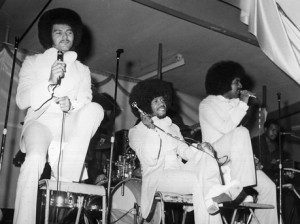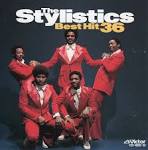
One of the prominent features of 1960s and 1970s popular music was the prevalence of singing groups. The feature seemed to have been triggered by the penchant of many artists of that period to emphasise harmony in their musical output.
According to the late Brent Dowe, leader of the 1960s Jamaican vocal trio, The Melodians, “At the time, the whole emphasis was on harmony, not on the lead singer. Harmony was the thing. That’s why I had to sing in the background many times,” he explained to me in an interview. The Melodians – consisting of Dowe, Tony Brivett, and Trevor McNaughton, the only surviving member – dominated rocksteady’s three-part harmony, singing in the mid to late 1960s with hits like Swing and Dine, Little Nut Tree, You’ve Caught Me Babe, and Everybody Bawling, a song about the plight of the poor, in which harmony was palpably felt, as they sang:
“They bawling for love, their hands on their heads, not a money in their pockets, nothing they do can change this kind of living.”
Several other Jamaican groups of that period exhibited this three-part harmony style, which produced several outstanding artists, including Bob Marley, Peter Tosh and Bunny Wailer from The Wailers, John Holt from The Paragons, Frederick ‘Toots’ Hibbert from The Maytals’ and Leroy Sibbles from The Heptones. Other prominent Jamaican vocal groups of the period were The Techniques, The Gaylads, The Jamaicans and The Clarendonians.
It is worthy of note however, that although many of the successful 1960s and 1970s Jamaican recording artists began in groups before going solo, a couple like Bob Marley and John Holt, in a real sense, took the reverse route. Marley, in fact began his recording career with three solo recordings, Judge Not, One Cup of Coffee and Terror, for Leslie Kong’s Beverley’s label in 1962 before forming the Wailers, while Holt started with the same producer a year later with two solo pieces titled Forever I’ll Stay, and I Cried All My Tears before joining The Paragons.
On the international scene, The Spinners, The O’Jays, The Stylistics and The Chi-Lites, all from the United States, stood out as harmony kingpins of early 1970s group vocalising. From a Jamaican perspective, the latter two may have won more Jamaican hearts than any other foreign group of that period. The Chi-Lites were earlier on the scene. They had their origins way back in the late 1950s, when two vocal groups, The Chanteurs and The Desideros, merged. Originally a quintet, they released a few undistinguished singles, while undergoing several name changes. It was not until 1964 when they were reduced to a quartet (Eugene Record, Robert Lester, Credel Jones and Marshall Thompson), that they officially became known as The Chi-Lites.

Brunswisk Records
In 1968, they signed with Chicago’s large record label, Brunswick Records, and the following year had their first national hit titled Give It Away. Their next success came in 1971 with Are You My Woman, which set the stage for a slow, but steady stream of top 10 hits from the quartet for the next four years.
Unlike their contemporaries who exhibited the ‘Philly sound’ from Philadelphia, The Chi-Lites all emerged from Chicago, a town that is better known for its gritty urban blues and R&B music. Led by Eugene Record’s superb songwriting skills and warm pleading tenor and falsetto, The Chi-Lites amassed 11 top 10 R&B singles in the early 1970s alone. They ranged from protest songs like Give More Power to the People(1971) and There Will Never Be Any Peace (until God Is Seated at the Conference Table), to romantic ballads like, Have You Seen Her(1971) and Oh Girl (1972), both number one R&B hits. Their 1974 hit,Homely Girl, was a big favourite, especially with the down-trodden women who found comfort in the words:
“It must have broke your poor little heart
when the boys used to say, you look better in the dark,
but now they’d give all they learned in school
to be somewhere in the dark with you.
Homely girl, you used to be so lonely,
You’re a beautiful woman.”
Their hits continued to flow throughout the 1970s with R&B hits such asA Letter to Myself (1973), Stoned out of my Mind (1974), Too Good to be Forgotten and Here I Am (1975). In later years, the group’s success was hampered by the demise of Brunswick Records and the departure of their inspirational leader, Eugene Record, for a solo career.

Singing groups have always had a penchant for naming themselves after what their sound, style or message portrays, and perhaps none has chosen more wisely than The Stylistics, because style is what this group possess in abundance. A product of the Philadelphia soul music scene, they came together in 1968 with member, Russell Thompkins Jr, Airrion Love, James Dunn, Herbie Murrell and James Smith. They had the advantage of possessing two superb lead vocalists in Thompkins’ high, clear falsetto, and Love’s raw-edged deep baritone. Success had always been an inbuilt ingredient of the group from the very beginning, when they recorded You’re A Big Girl Now in 1970 (No. 7 R&B, 1971) for the local Seabring label. When Avco Records bought the rights to the record and signed the Stylistics to a contract in 1971, they were well on their way to recording a stream of ethereal, best-selling singles under the direction and songwriting skills of the Jamaican-born Thom Bell. He crafted a series of hit singles, all of them a top 10 R&B hits, and some top 10 pop. They included You Are Everything, Betcha By Golly Wow,Stop, Look, Listen to Your Heart, I’m Stone in Love With You, Break Up to Make Up, and You Make Me Feel Brand New. Following this song, The Stylistics began working with producer Van Mckoy in 1974. Although their record sales declined in the US, in the mid-1970s, they remained popular in Europe with Sing Baby Sing, Na Na is thesaddest Word and Can’t Help Falling in Love.





You must log in to post a comment.